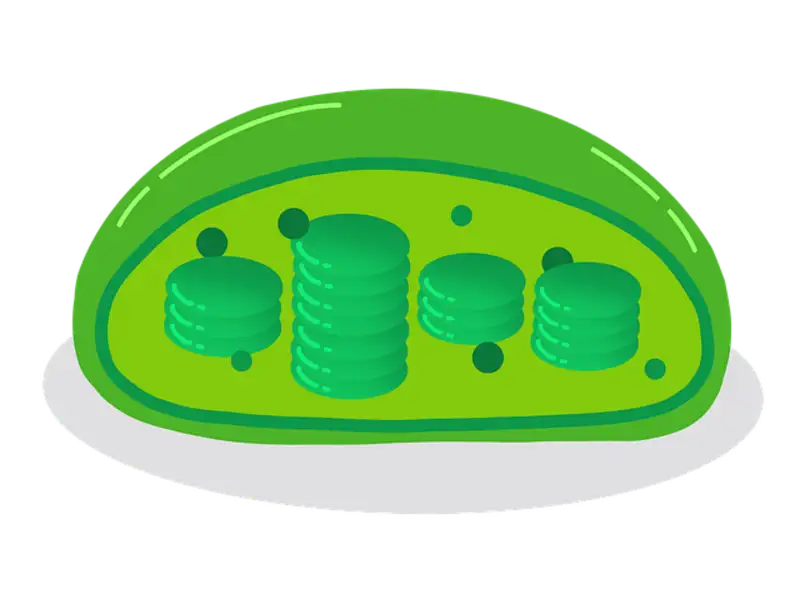What is the equation for Photosynthesis?

Photosynthesis is the process by which plants, algae, bacteria and photosynthetic protists produce chemical energy (ATP) from light.
The word photosynthesis is derived from the Greek words 'photo' (light) and 'synthesis' (putting together). It is a process used by plants and bacteria to harness energy from sunlight in order to convert water and carbon dioxide into glucose (sugar) and oxygen.
Why is photosynthesis so important?
Organisms like trees and plants release oxygen as a byproduct of photosynthesis. Creatures like us, require oxygen to breathe through a process known as cellular respiration.
One of the products of cellular respiration is carbon dioxide, a requirement in photosynthesis. Each process requires the other in a substantial way, linking the 2 together in an important relationship.
Looking to learn more about photosynthesis and biology as a whole? Find a GCSE Biology tutor on Sherpa here, and have online tuition through your browser.
The Photosynthesis Equation
The equation for photosynthesis is:
6CO2 + 6H2O + sunlight (energy)-> C6H12O6 + 6O2

Reactants and Products of Photosynthesis
The reactants of photosynthesis are found to the left of the arrow '->'. This means the reactants of photosynthesis are carbon dioxide, water and sunlight energy.
The products of photosynthesis are to the right-hand side of the arrow '->' and as such, are glucose and oxygen.
The Cellular Respiration Equation
You will notice that the equation for cellular respiration is the antithesis of photosynthesis.
C6H12O6 + 6O2 -> 6CO2 + 6H2O + ATP (energy)

Reactants and Products of Cellular Respiration
The reactants of cellular respiration are found to the left of the arrow '->'. This means the reactants of respiration are glucose and oxygen.
The products of cellular respiration are to the right-hand side of the arrow '->' and as such, are carbon dioxide, water and usable energy known as ATP.
The connection between Photosynthesis and Cellular Respiration
Photosynthesis makes the glucose that is used in cellular respiration to make ATP. Glucose is turned back into carbon dioxide, used in photosynthesis. Whilst water is broken down to form oxygen during photosynthesis, the process of cellular respiration uses oxygen and combines it with hydrogen in order to create water.
Photosynthesis and cellular respiration are linked in a very real and important way, without photosynthesis we wouldn't be able to breathe and without cellular respiration, we couldn't produce energy.
Interesting photosynthesis facts:
1) Photosynthesis makes around 5% of the total photosynthetic activity on Earth. This means photosynthesis is not responsible for the photosynthetic activity of all organisms on earth, but it is responsible for photosynthesis in plants, algae and photosynthetic bacteria.
2) The reason photosynthesis doesn't make 100% of the photosynthetic activity on Earth is that photosynthesis works best in direct sunlight (and during daylight hours). Therefore deep sea-dwelling photosynthetic organisms and photosynthetic organisms at night time photosynthesise using different pathways and do not contribute to photosynthesis.
3) Photosynthesis was first observed in the 1600s by two scientists called Jan van Helmont and Joseph Priestley. To put this into perspective, it wasn't until the 17th century that someone observed photosynthesis first-hand. Before the 17th century, photosynthesis was thought to be some kind of chemical reaction or even alchemy. It wasn't until photosynthesis was actually observed that more theories began to form on how photosynthesis worked and what it actually is.
4) Photosynthetic bacteria are more efficient at photosynthesising than photosynthetic plants. Photosynthetic bacteria photosynthesis around 10 times faster than photosynthetic plants. This is because photosynthetic plants have evolved to photosynthesise using less effective "C3 photosynthesis" - this process requires high light intensity, high temperatures and the plant must use a lot of energy in order to carry out photosynthesis.
Are you looking for some extra help for your upcoming GCSE Biology exams? Arrange a free introduction with a Biology GCSE tutor on Sherpa.
Looking to become a tutor and help students through their exams? Check out how to become a tutor here.
Students
Looking for a tutor?
Sherpa has hundreds of qualified and experienced UK tutors who are ready to help you achieve your goals. Search through our tutors and arrange a free 20 minute introduction through our industry-leading online classroom.
Find a TutorSimilar Articles
10 Tips For Your AQA Geography GCSE Exam
An Examiner shares his advice on the AQA GCSE Geography exam covering assessment objectives, paper formats and some essential skills that you need to master to get top marks!

Dr Peter R
18th January



